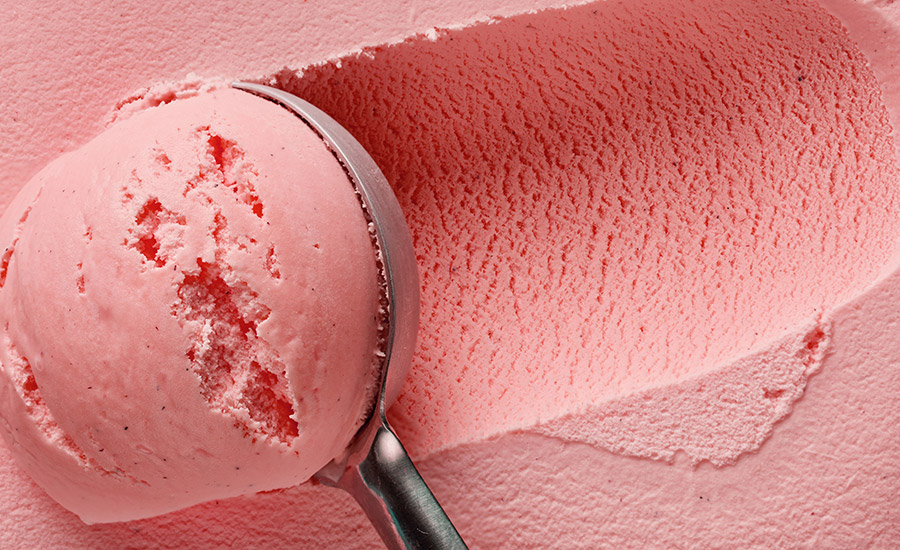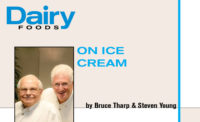How ice cream stacks up as a clean-labeled food
Ice cream is the only food intended to consumed frozen.

Photo courtesy of Magone / iStock / Getty Images Plus


Consumer interest in “clean labels,” i.e., use of ingredients perceived to occur naturally in foods, has created a challenge to frozen dessert formulators. Perceived consumer expectations include shorter, simpler, more transparent ingredient declarations, more “consumer friendly” terminologies, low or no “additives” or “preservatives,” “free from ……”, non-genetically modified raw material sources, sensitivities toward working conditions (Fair Trade), ingredients of organic derivation, the environment (sustainability), and the like.
Ironically, many ice creams produced before the 1950s would be considered clean labeled today. Since then, however, supply chains have been extended, exposing ice cream to increasing degrees of temperature abuse (heat shock) and its negative influences on ice cream properties, i.e., sensory appeal (smooth texture, rich/creamy body, and delivery of desirable flavor(s). In addition, competitive forces (and, in some cases, regulatory considerations, changing consumer demands/expectations, etc.) have led to physical and chemical “stress” on products. As a result, many of these products were reformulated to maintain sensory appeal, competitive pricing, and brand identities in the face of ever-changing market realities. Some of these approaches may not be compatible with clean-label initiatives. Replacing functionalities already formulated into existing products is not an easy task.
Key to understanding remains … ice cream(and other frozen desserts) is the only food intended to be designed, formulated, made, and distributed with the full intent of being consumed frozen. Critical functionalities that protect ice cream from the rigors of post-packaging handling are: control of the amount and size of ice crystals via the management of freezing point and the whipping/freezing process; managing the behavior of liquid water; control of fat agglomeration and its influence on a variety of key properties; and the development and stability of small air bubbles critical to the perception of creaminess and richness. Given existing consumer expectations and the products involved, compositional limitations, etc., the following are key but not mutually exclusive considerations.
Freezing point management: The more water frozen at any given freezer draw temperature (clearly restricted by desirable flow properties of freshly drawn product and any mechanical limitations of the freezer), the more and smaller the ice crystals. Maximizing the number of and reducing the size of ice crystals helps create smooth/creamy ice cream and manages the ice-to-water-to-ice transitions across distribution.
Control of water mobility: As the mobility of unfrozen water is restricted, the more stable are body (bite/chew) and texture (smoothness/creaminess) during distribution. A number of clean-label ingredient and/or process options exist. These include alternative hydrocolloid systems, novel bulking agents, managing water mobility via selection of amount/type of “pre-conditioned” dairy proteins, and/or managing heat exposure during mix processing.
Fat agglomeration: Critical to creating smooth/creamy texture is some degree of partial fat destabilization (i.e., fat agglomeration.) Much of this mitigated via use of select emulsifiers that actually allow “demulsification” under conditions of mix aging before whipping/freezing.
Management of processing conditions can also be useful in supplementing the effects of ingredients on structure and air bubble size. Higher (and more controllable) homogenization pressures have been found to enhance creaminess, richness, and control of air bubble size. Pre-aeration of mixes can have a similar effect. Lower freezer draw temperatures associated with the generation of small ice crystals also increase the extent of fat agglomeration, which adds beneficial effects on air bubble size/strength, smoothness, creaminess, richness, flavor delivery, and overall, sensory appeal.
Although much of the rationale for, and, connotation of, clean labeling may be argumentative, it should be noted that perception is reality and, as such, influences decision-making concept-to-consumer. If properly considered, a number of compatible approaches, ingredients, process conditions, etc., are available.
Thus, a conundrum exists. The consumer’s perception that ice creams should have transparent, simple, wholesome, and understandable clean labeling, versus the technical demands and limitations of economically delivering ice cream of varying compositions in various forms to various points of consumption under varying conditions, much of which, may, or, may not, be wholly compatible with clean labeling.
Adapted from Tharp & Young on Ice Cream: An Encyclopedic Guide to Ice Cream Science and Technology, DesTech Publications.
For more on clean-labeled frozen desserts and more, join Dr. Steve Young and Mr. Bill Sipple, at Tharp & Young on Ice Cream: Technical Short Course, Workshops and Clinics; for 2025 offerings, registration, and more, go to www.onicecream.com or call 281-782-4536 or 913-530-8106.
Looking for a reprint of this article?
From high-res PDFs to custom plaques, order your copy today!




